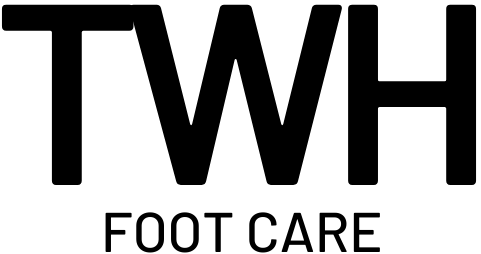
As podiatrists we are asked how to cut toenails properly all the time. What seems like a simple task often becomes more complicated once different toenail shapes are taken into account. Incorrect cutting technique not only affects the overall cosmetic outcome of a pedicure but is also one of the most common causes of ingrown toenails. This painful condition will stop you in your tracks making any shoe uncomfortable. Don’t even think about wearing a heel or pointed toe! Read on to avoid this painful mistake.

Toenail shape differs greatly from person to person, and due to many reasons. Previous trauma to the nail such as dropping something on your toe may cause permanent damage to the nail bed. This may result in either a thickened nail or a ridged nail plate. Genetics also play a part as some toes are rather fleshy with thick lateral folds (see below) that hug the sides of the nail causing slow changes to the nail plate over time. Poor cutting technique over an extended period can also contribute to involuted or curved nails. As can toenail picking!
So where to start? To understand correct nail cutting technique it is necessary to have a basic understanding of nail anatomy –

In this post we are only going to talk about nail cutting rather than a complete pedicure. As you can see from the above picture the attached portion of nail is called the nail bed. On either side of the nail bed are the lateral folds and the front portion of the nail is referred to as the free edge.
Now that this is understood, you can easily follow our TWH step-by-step guide for cutting your toenails like a professional:
- Remove all existing nail polish so that you can clearly see the nail plate and free nail edge.
- Use clean nail clippers or a wide nail file. It is better to use a straight edge clipper rather than curved
- Cut the nail straight across leaving approximately 2-3mm of free nail edge. This is the white nail at the distal edge of the nail plate. For some people it is easier to use a wide nail file to achieve this straight shape, rather than clippers (especially if your nails are naturally short)
- File the corners of the nails only slightly to remove any sharp edges. This will reduce the risk of ingrown toenails as the nail grows.
- If the nail plate is damaged or very involuted (curved), you may need to leave more free edge on either side of the nail (near the nail folds) to reduce the risk of ingrown toenails.
- Avoid picking your toenails. This habit causes damage to the nails, nail plate and increases risk of ingrown toenails.
- Consult a podiatrist (foot doctor) to help achieve a correct shape. It is often easier to continue correct cutting once the shape is achieved. Your podiatrist will also assist with any other toenail deformities allowing a better cosmetic outcome.

Follow these steps to achieve the perfect toenail cut and beautifully shaped nails – just in time for sandal season!
Until next time,
E&E


